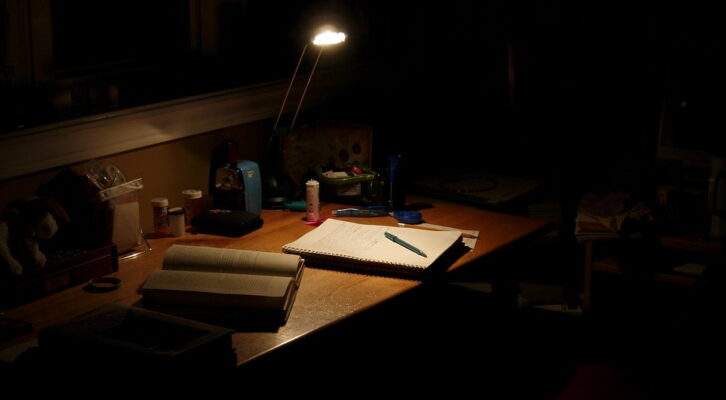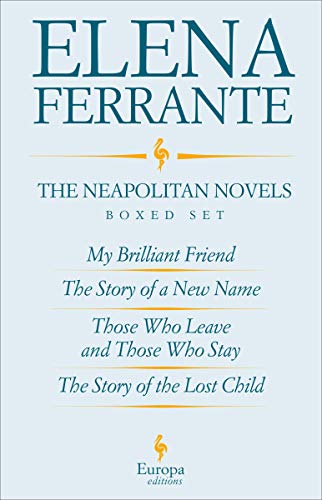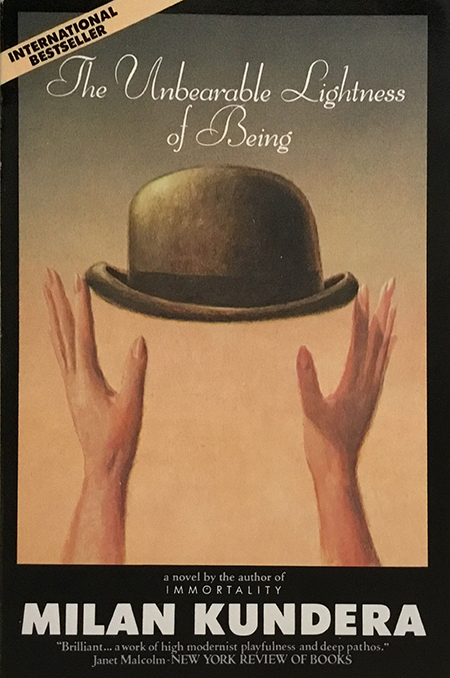
Diana Goetsch on How Elena Ferrante and Milan Kundera Helped Her Write a Memoir
The Author of This Body I Wore on Trans Identity and Making Nonfiction Read Like Fiction
In This Body I Wore, I’d set out to write a pre-transition literary memoir, which in my case meant capturing the lived reality of being trans and not knowing it, for fifty years. Capturing an experience is very different from explaining it. To explain it would be to impose a current understanding onto a time when there was little understanding of transness. The experience at the time was one of being displaced from experience—but how do you capture that?
In a remarkable New Yorker essay about the lifelong impact of closed adoptions, Larissa MacFarquhar concludes that being adopted is “a profoundly different way of being human.” I would say the same of being trans; it is a profoundly different way of being human, not because of your birth or your body, but rather because of a gaping hole in your developing identity—not being able to know yourself in your gender. (This is not the case for current trans children, and why it’s vital to protect their right to have a childhood in their gender, which is the birthright of us all.)
We might also say the same of many great works of literature, that they explore profoundly different ways of being human. The innovation in craft required for the task is a big part of what makes a book great. And maybe any great book could have helped me write my book.
But four in particular did. Each, as if on schedule, helped me solve a problem I was facing in This Body I Wore. I discussed two, The Peregrine, by J.A. Baker and A Writer’s Diary, by Virginia Woolf, in an article last year. In honor of the paperback edition of my memoir, I revisited the other two books that allowed me to write my book.
*

Elena Ferrante, The Neapolitan Quartet
Elena Ferrante’s four Neapolitan novels, published in a stupendous flurry between 2012 and 2015, comprise a single unified work. That opus is longer than War and Peace, and is, in its own way, monumental. It is a monument to women’s experience, particularly the experience of friendship among women. Born days apart, Lena (the narrator) and Lila must each survive their impoverished, violent, crime-ridden neighborhood, along with misogynistic families and a sexist Italy—if they are to have any agency over their lives.
Reading Ferrante, I was struck by the complexity of events and circumstances she meticulously lays out and continually re-weaves. Nothing seems to outstrip Ferrante’s powers of narration, even when it comes through a narrator struggling with language, as Lena does when her friend speaks in dialect about her sexuality:
The coarse language of the environment we came from was useful for attack or self-defense, but, precisely because it was the language of violence, it hindered, rather than encouraged, intimate confidences… Before such frankness I understood that I could not be silent, that I had to let her feel how close I was, that I had to react to her confidences with equal confidences. But at the idea of having to speak about myself… my uneasiness grew, I forgot how difficult her confession had been, that very word, however vulgar, was set in the weariness in her face, in the trembling of her hands, and I was brief. (Those Who Leave and Those Who Stay)
Ferrante doesn’t just relish complexity (“Tangled knots fascinate me,” she has said), she understands that it is necessary for holding a mirror up to the experiences of women coming from the poorest neighborhoods of post-war Naples.
Reading Ferrante gave me the faith that anything human can be described. I made a rule: never simplify in my writing what was complex in reality.
There’s a scene in the fourth volume (The Story of the Lost Child) involving gender identity that contains so many levels of complexity it seems to defy gravity. The same two friends, now pregnant, are brought by Alfonso, an old schoolmate who is gay, to a maternity clothing store. Lila’s and Alphonso’s banter takes on a tone unfamiliar to Lena, and then—
At a certain point Lila grabbed a beautiful dark dress and, as if the mirror in the shop were broken, said to [Alphonso]: show me how it looks on me. She said those incongruous words as if they expressed a normal request, so that Alfonso didn’t wait to be asked again, he grabbed the dress and shut himself up in the dressing room for a long time. (The Story of the Lost Child)
When Alphonso appears in the dress with his hair down his “tendency to resemble [Lila]…came abruptly into focus.” The banter in the shop turns more strange, conspiratorial (“I know exactly who’d like you,” says the shop owner), then Lila buys Alfonso the dress. For Lena, who has returned to Naples after some years away, the incident is a fugue of allusions, morphing relationships, and “the usual oscillation between the visible and the hidden.”
After drafting the earliest fragments of what would become This Body I Wore, I very much liked what I wrote. A month later, I very much didn’t. More than just falling short—I disagreed with what I had written. An account that had initially rang true now felt like a lie.
My past seemed to be shifting, like an artist’s model who refused to sit still long enough to be painted, and I gave up on the memoir for a year. Of course it was my understanding that was shifting; I hadn’t grasped the full complexity of past events, which seemed ungraspable.
Reading Ferrante gave me the faith that anything human can be described. I made a rule: never simplify in my writing what was complex in reality. This helped me to stick with vexing passages for dozens of drafts—even when it was in galleys—in order to fully render my “tangled knots.”
One of those knots involved fixating on women’s clothing (something many trans women won’t speak of publicly, due to how transphobes use this to shame and reduce us). At one point I share a convoluted fantasy that’s remained vivid in my mind for decades. There had been a story in the papers about a fashion model who’d thrown herself off a balcony on the Upper West Side.
The story confounded me—”why would a beautiful woman ever do that?”—and gave rise to a daydream of saving, or perhaps becoming, her:
I find her on the balcony and try to convince her not to jump. I tell her how beautiful she is, though she’s tired of hearing that (and maybe it’s what got her into this mess). I point to the amazing wardrobe in her closet, and drawers full of magnificent underthings. “Why would you want to give this up?” I plead. She looks at me funny—though I have bought some time! I try to tell her how lucky she is to be in her body, and praise her proportions and curves, her beautiful hair and smooth skin, the magnificent flatness of her crotch. “What kind of a sicko are you?” she says, throwing a second leg over the balcony rail. “Now get the fuck out of here so I can kill myself in peace!” (This Body I Wore)
Transness, prior to coming out, is often sensed through echolocation via other categories such as homosexuality, fetishes, shame, and bizarre projections onto cisgender women. I elsewhere called these “rough approximations,” though these rough approximations, their very “off-ness,” were my experience—just as for Ferrante’s narrator Lena, the lack of language, the “oscillation between the visible and the hidden,” was the experience.
*

Milan Kundera, The Unbearable Lightness of Being
Why had I never before read this magnificent book? One answer is that we all have gaping holes in our lives as readers. A better answer might be to simply plead the fifth.
As many know, The Unbearable Lightness of Being is a gorgeous but brutal novel of passion and disconnection. The characters are so hungry to live, yet so unfit for love. The opening sequence, concerning Tomas’ and Tereza’s impossible bond, devastates me whenever I reread it.
She was a child whom he had taken from a bulrush basket that had been daubed with pitch and sent to the riverbank of his bed. She fell asleep. He knelt down next to her… He smelled the delicate aroma of her fever and breathed it in, as if trying to glut himself with the intimacy of her body. And all at once he fancied she had been with him for many years and was dying… But was it love?… Was it simply the hysteria of a man who, aware deep down of his inaptitude for love, felt the self-deluding need to simulate it? (The Unbearable Lightness of Being)
In a later chapter Kundera maps out the “abyss” in another love relationship, via “A Short Dictionary of Misunderstood Words,” which he prefaces with a remarkable analogy:
While people are fairly young and the musical composition of their lives is still in its opening bars, they can go about writing it together and exchange motifs… but if they meet when they are older, like Franz and Sabina, their musical compositions are more or less complete, and every motif, every object, every word means something different to each of them.
If I were to make a record of all Sabina and Franz’s conversations, I could compile a long lexicon of their misunderstanding. (The Unbearable Lightness of Being)
When I read this passage, I instantly knew I could now write about a key moment that had long eluded me. It occurs in a chapter called “Revisionist History,” where I am arguing with my girlfriend Vanessa, a widow and mother of two, in the bedroom of her house. This would be my last relationship prior to transitioning, though I don’t know that.
Kundera showed me that I could illustrate this hopeless situation in a single conversation where two people discuss two different things as if they are the same thing.
What I do know is the relationship is unworkable and has been for some time. We are having a dispute that is partly sad and partly ridiculous:
She is of the opinion that I am happier in our relationship than I say I am. Previously Vanessa was a litigating attorney, so she is trained in making strong cases. I am trained as a Buddhist and a poet, and as far as I’m concerned, as soon as you try to make a case for something you’ve lost it. When we argue it is like we are gazing out different windows while discussing two trees as if they are the same tree. (This Body I Wore)
Vanessa brings up a day we lingered in bed quietly for a long time after sex, pointing out that I was happy then, and just needed to get back there. I remember it differently, and flash back to the day, to how passionate she’d been during sex, how at peace she was afterwards—and how unutterably sad I was, gazing around the room, to feel neither of these. I feared I would never be happy.
It’s not so much that Vanessa and I came from two different walks of life; rather, she had already written “the musical composition of her life” with a husband who had died, and was now trying to replay that music on me. Kundera showed me that I could illustrate this hopeless situation in a single conversation where two people discuss two different things as if they are the same thing. This gave way to the flashback where, like Tomas gazing on a peaceful Tereza, I was lost.
For fifty years I told myself I was a heterosexual man. That wasn’t true. What was true was that, like the men in The Unbearable Lightness of Being, I felt passionately drawn to heterosexual women. The prospect of living without their love was the biggest thing that kept me from transitioning. Kundera knew that cocktail of passion and impossibility, so widespread in trans experience, extremely well. He wasn’t writing about trans experience, though maybe all impossibility meets at a point.
*
Every writing project has natural enemies, or obstacles, and I’d venture to say that a piece of writing is great in proportion to the obstacles it has overcome. Of the four books that helped me overcome mine, none were memoirs, and two (discussed here) are works of fiction.
Maybe there is something suspect about that. Why should a memoirist need anything other than recall and paper to do the job?
I’m thinking of Robert Caro, who has said, “If the work is to endure, the writing has to be at the same level as a work of fiction.” I aimed to write a memoir that reads like a novel.
My favorite memoirs—which include Thoreau’s Walden; Antoine de St. Exupery’s Wind, Sand, and Stars; and The Fire Next Time by James Baldwin—are seldom categorized as such. That’s because they’re literature, first and foremost, in conversation with the rest of literature. They happen to be constructed from personal and historical fact, but the books transcend their information.
I’m not talking here about “creative nonfiction,” which I do not associate myself with. Rather I’m thinking more along the lines of Robert Caro, the most factually exactingly writer I know of, who has said, “If the work is to endure, the writing has to be at the same level as a work of fiction.” I aimed to write a memoir that reads like a novel.
It’s been a year since This Body I Wore (now in paperback) came out. I recently found out it had been a finalist for an award I wasn’t aware it was up for. I was told this by one of the judges, who said the other judges had too much trouble deciding what genre it was. It would have been sweet to win—though I like that they couldn’t decide the genre.
______________________________

This Body I Wore: A Memoir by Diana Goetsch is available via Picador.
Diana Goetsch
Diana Goetsch is an American poet and essayist. Her poems have appeared widely, in The New Yorker, Poetry, The Gettysburg Review, Ploughshares, The Best American Poetry, and the Pushcart Prize anthology, and in the collections Nameless Boy and In America, among others. She also wrote the “Life in Transition” blog at The American Scholar. Her honors include fellowships from the National Endowment for the Arts, the New York Foundation for the Arts, and the New School, where she served as the Grace Paley Teaching Fellow. For twenty-one years Goetsch was a New York City public school teacher, at Stuyvesant High School and at Passages Academy in the Bronx, where she ran a creative writing program for incarcerated teens.



















